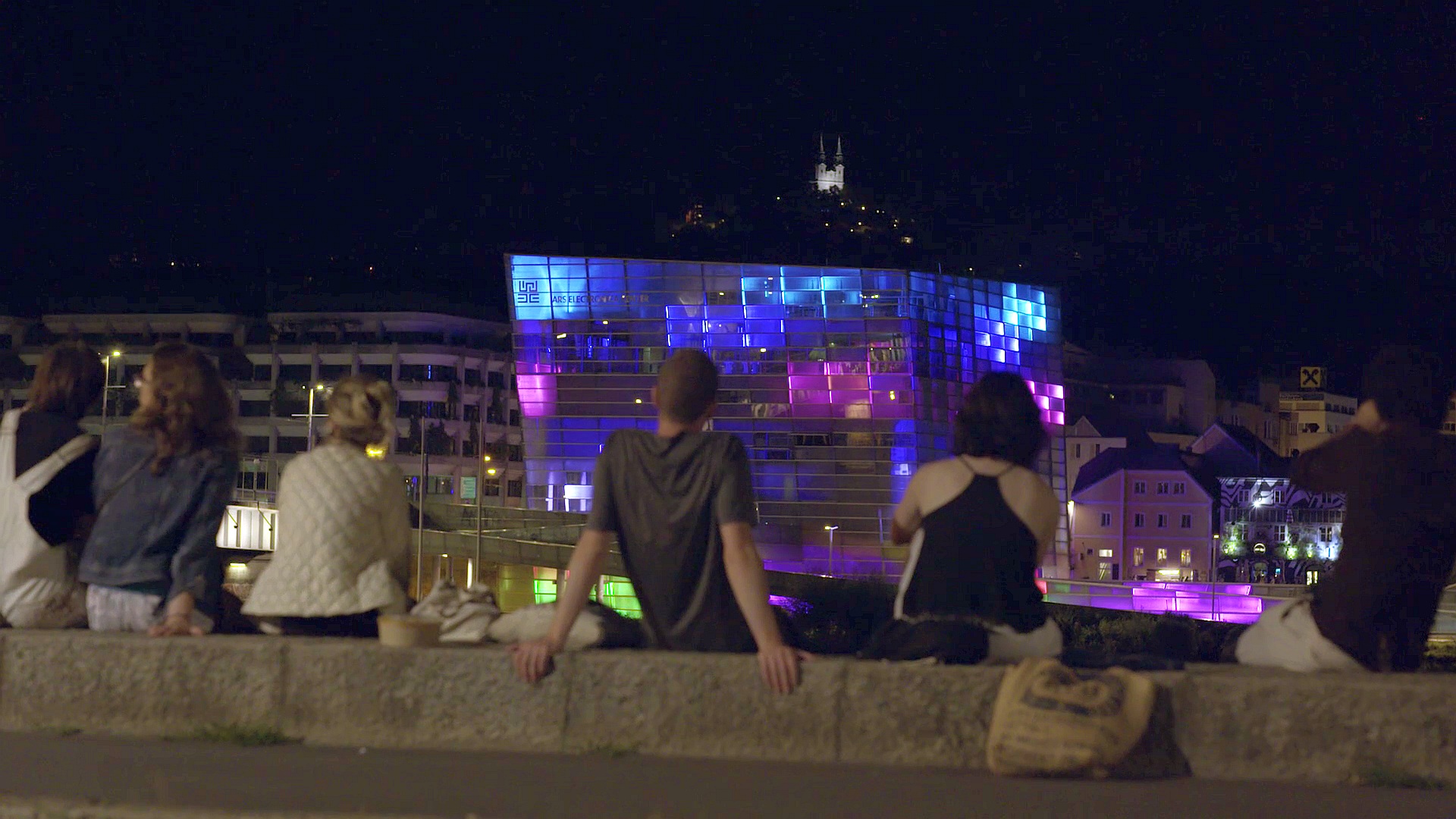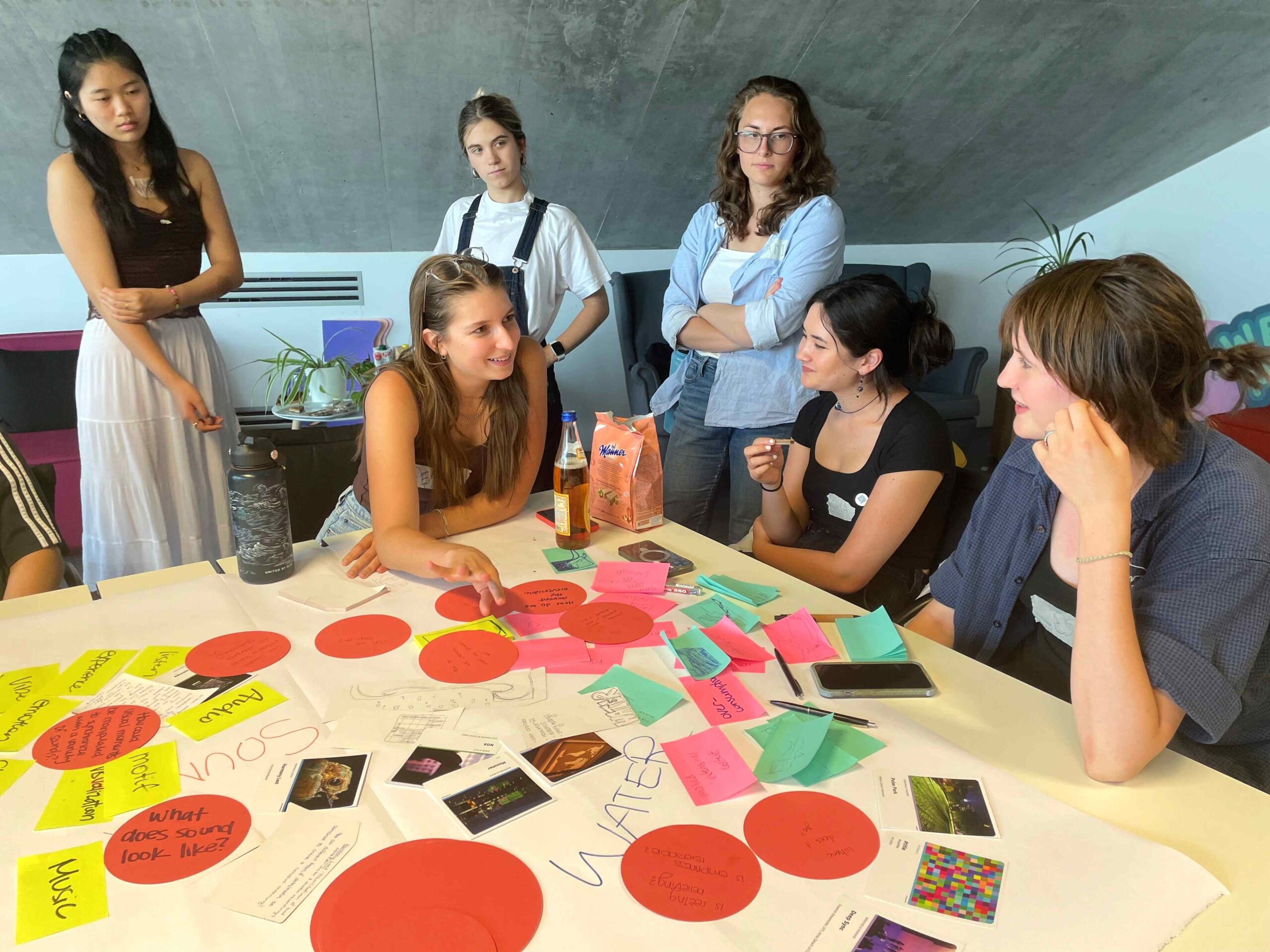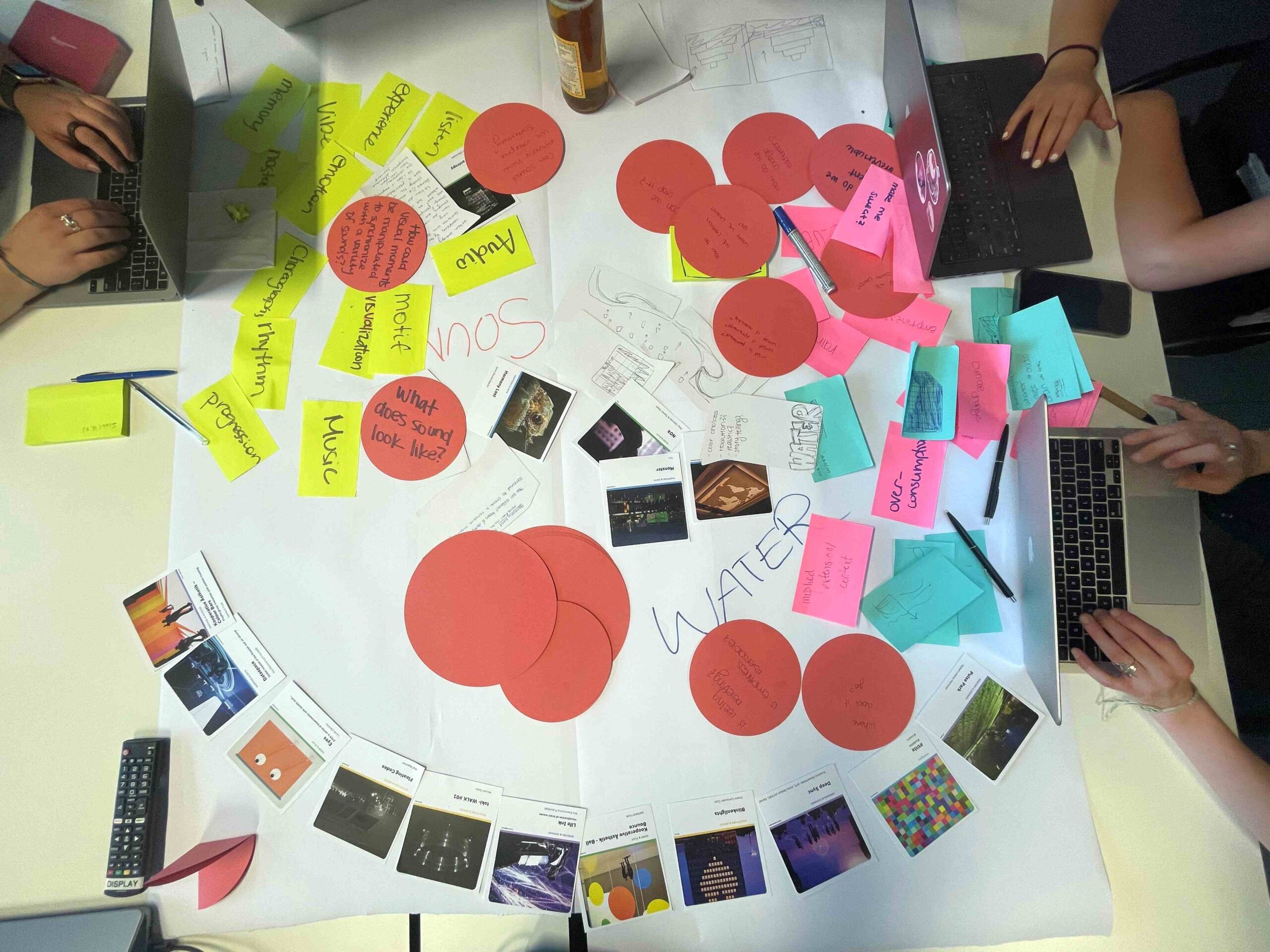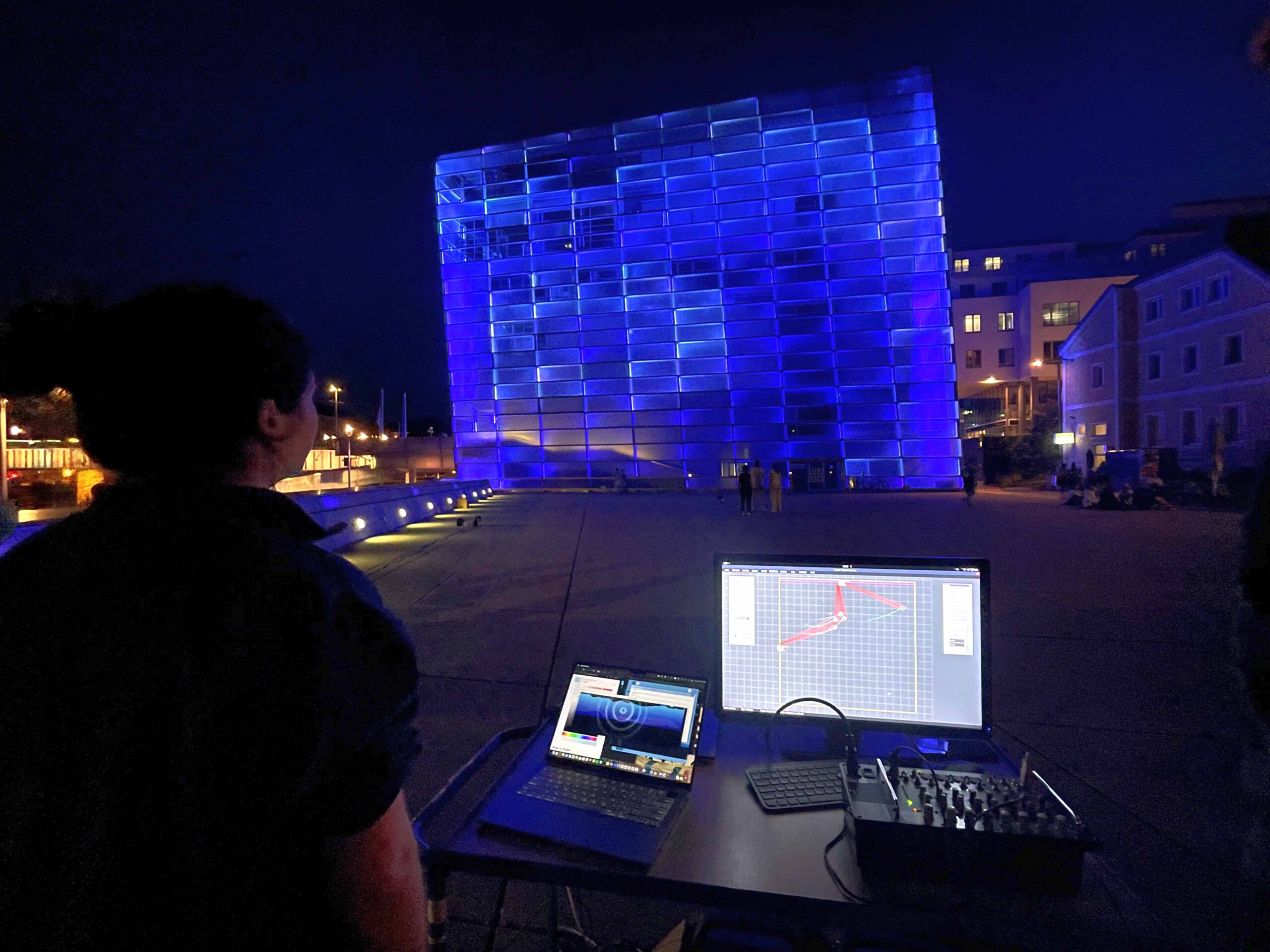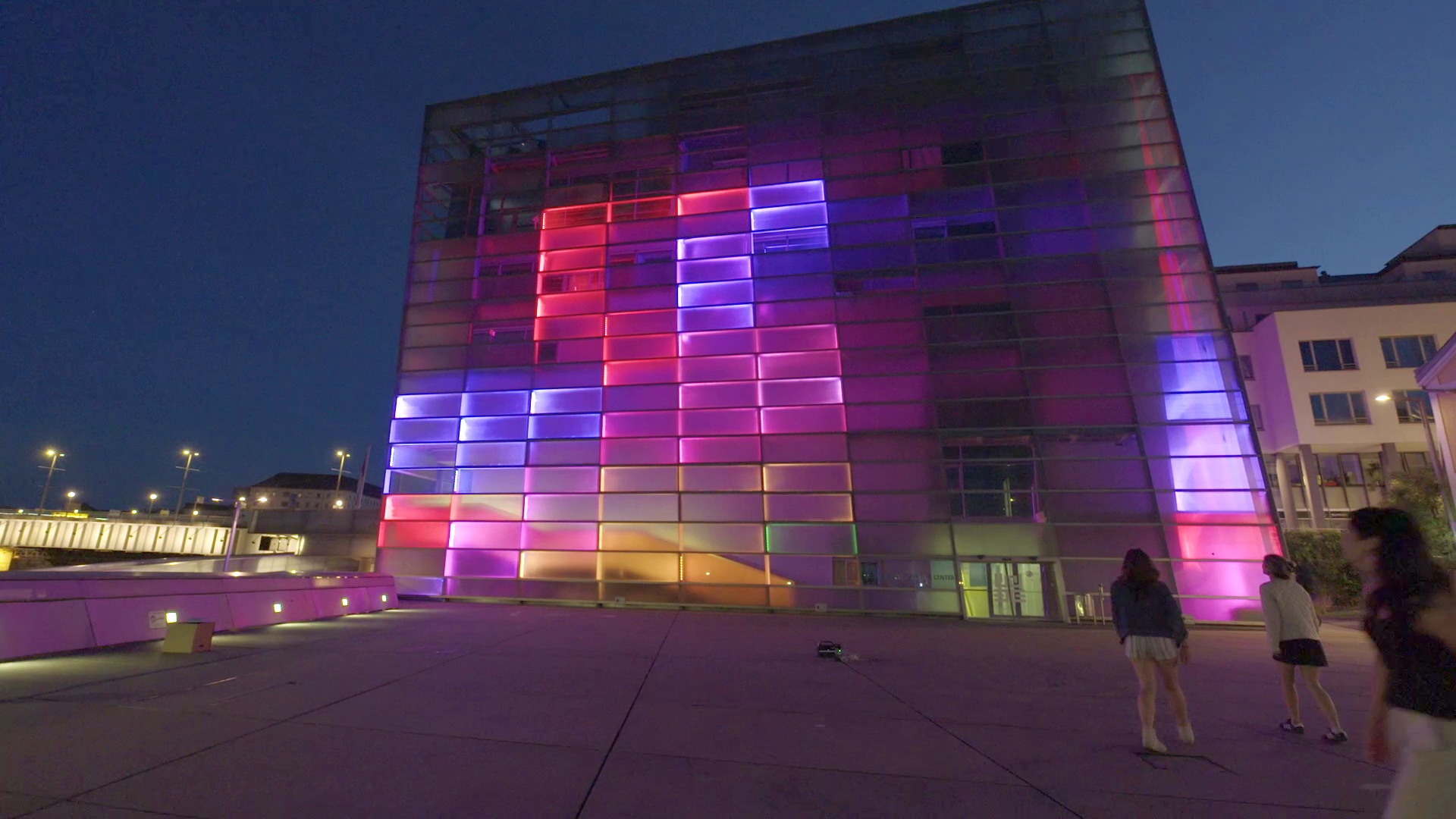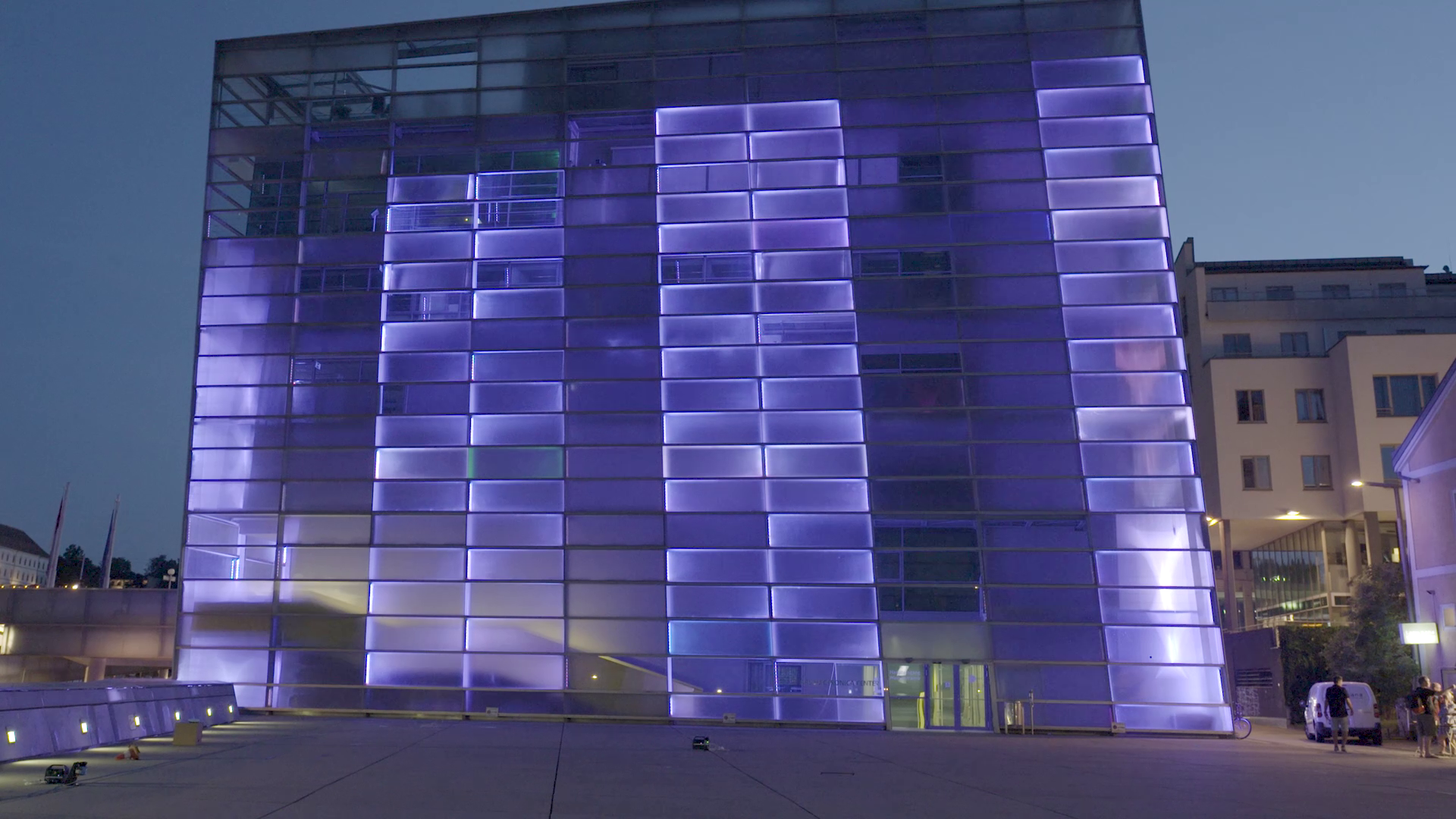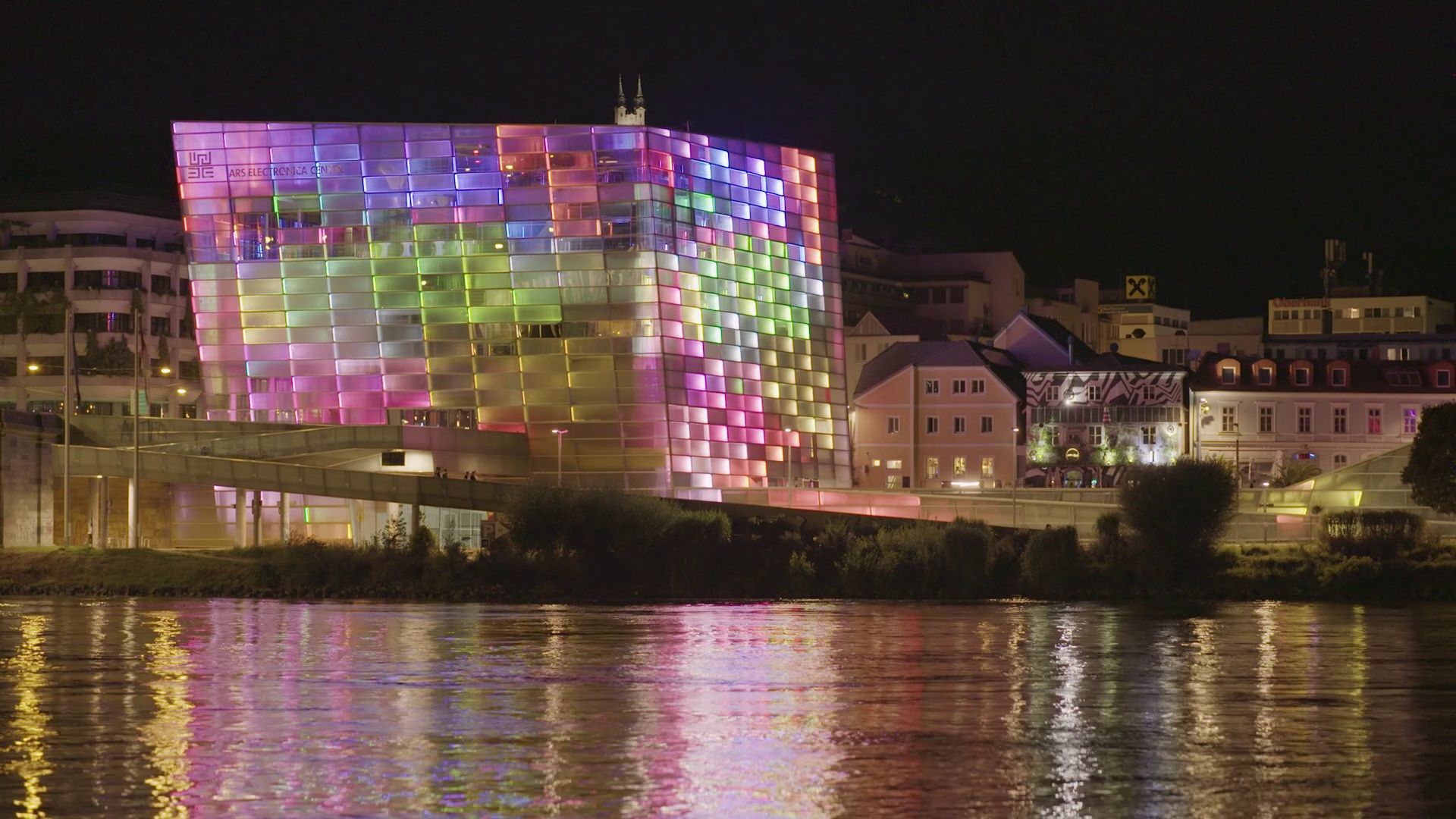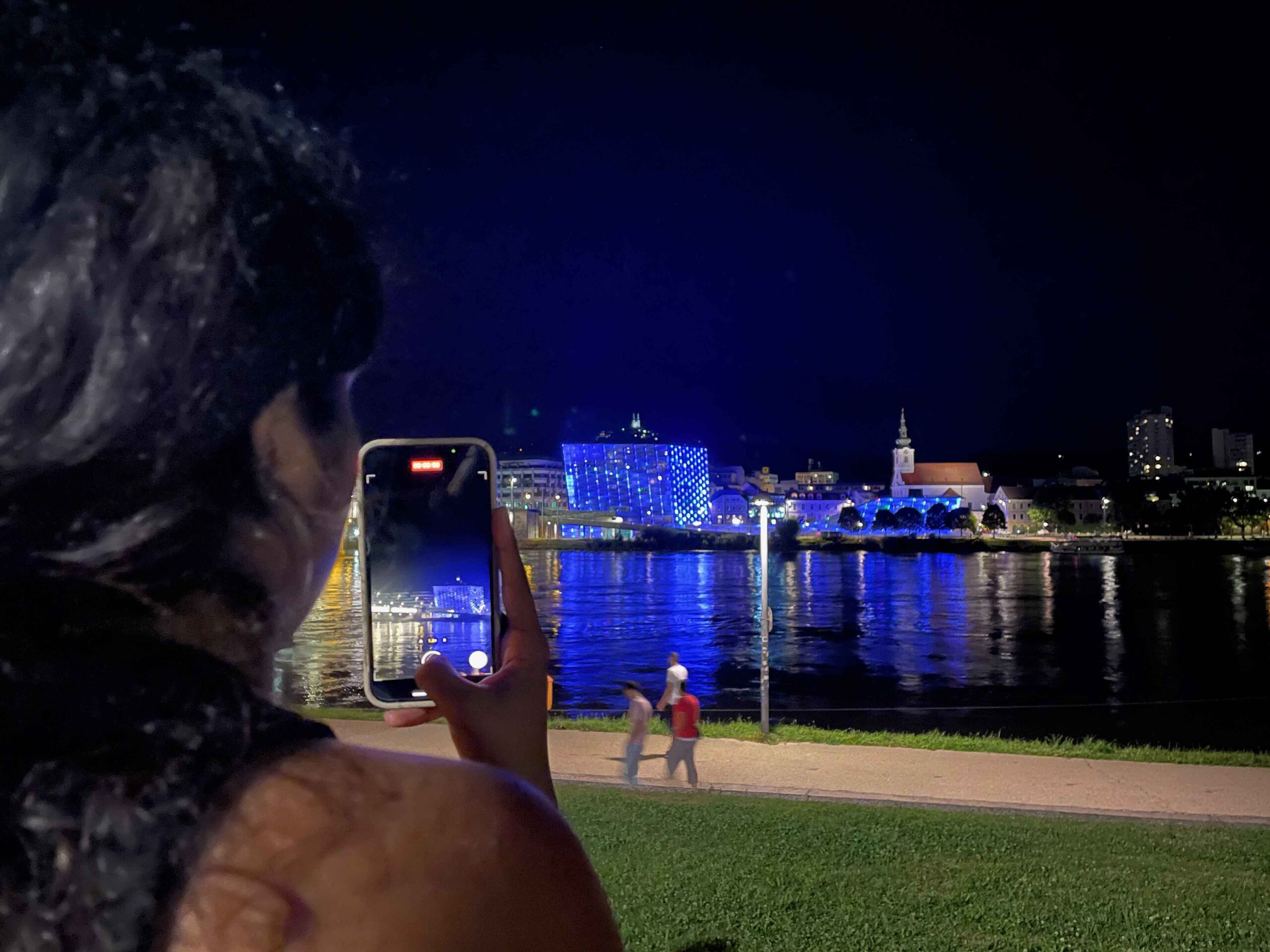July 2024 marked the fourth time the Ars Electronica Futurelab welcomed an interdisciplinary group of students from Northeastern University in Boston. Over a tightly packed three-day period, the students were once again tasked with creating media art projects for the Ars Electronica Center’s programmable media facade – showcasing how collaboration can transform a public space into a canvas for interaction, reflection, and engagement.
The students from Northeastern University took part in the Ars Electronica Futurelab Academy. Here, we challenge students’ creative potential through immersive workshops, hands-on seminars, and project-focused mentorship. The unique Ars Electronica ecosystem provides students with a platform to turn their ideas into reality, while we at the Futurelab benefit from the infusion of fresh perspectives. The finished works once more illustrated the power of collective creativity:
The students were guided through an ideation process to conceptualize their group works. An inspiration walk through the Ars Electronica Center and thought-provoking insights from Futurelab Key Researchers and Artists further enhanced the workshop. Fostering an open environment for ideation and interdisciplinary collaboration, the discussions led to compelling projects exploring the value of play and conversation in shared places as well as collective impact through empathy and discourse. The projects were then shared with the public on the final evening, showcasing how collaboration can transform a public space into a canvas for interaction, reflection, and engagement.
The projects, with descriptions from their authors:
Rippled
Jess Montgomery, Maya Robie, Peyton Pollard
“Rippled” demonstrates the power of collective collaboration to create change. As the facade fills with virtual water, interactions in the plaza generate ripples that amplify with increased participation, emphasizing the importance of working together to make a larger impact. Leveraging the context of a public plaza, the installation explores the generative value of play, conversation, and ephemerality in shared spaces. Situated along the Danube, “Rippled” examines water as a continuous, indefinite spatial entity constrained only by its intrinsic volume.
Conversation and Connection
Amy Wang, Druhi Bhargava, Olivia Olson-Roberts
For our project, we wanted to address the humanitarian crises occurring in Palestine as well as their connections with technology and global political events. Due to limited time, the building itself, and the scope allowed within the workshop, our conversations led us to address these pressing topics through abstraction and symbolism. After much discussion within the group, with our professors, classmates, and the Futurelab Academy team, we decided to produce a short animation. Our display uses narrative to highlight values and themes that are central to creating social change, such as empathy, communication, and the importance of starting conversations. This is depicted through the use of physical borders, literature, figures, and conversation bubbles, among other symbols. With this animation, we hope to spark conversations about Palestine and highlight the importance of continuing these necessary conversations.
Threads
Sami Gale, Sarah Zhang, Sophie Sawyers
“Threads” is an interactive display that uses motion sensors to track visitors’ movement and create a colored pathway, or “thread”, to show where a person has traveled. When two or more paths cross, an intersection is created, blending the colors at the connection together. Over time, the connection points grow to cover the entirety of the facade, creating a display composed entirely of visitors’ intersecting colors. Once the facade is completely immersed in color, the display restarts and turns back to black, ready to draw new connections.
“Threads” visualizes interactions between individuals as they move through the display and, more generally, through life. The goal is to create connections that grow and change, as well as reflect their creators’ respective journeys to the point of intersection. As society continues to adopt new technologies and forms of communication that promote the digitization of daily life, we aim to remind viewers of the importance of in-person connections and real-world contact that bring us closer to others. “Threads” is a platform that stitches together this modern desire for digital media and our innate human need for community. Our program is designed to bond people together and show that each of us is a product of accumulated growth and change.
Syn-aesthetic
Taylor Farnell, Fausta Fenner
“Syn-aesthetic” is an audio/visual synchronization inspired by synesthesia, a phenomenon that causes sensory crossovers such as seeing smells or tasting sounds. A common form of this is being able to see sound. This project explores the correlation between sounds, sights, and emotions, asking questions like “What does sound look like?”, “What does sound feel like?”, and “What do emotions look like?” Throughout the experience, the viewer will be taken on a journey through a full range of emotions, starting with a sense of calm and melancholy, building up to a frustrated passion. The relief of that anger reveals an overwhelming discomfort that builds towards its limit. With nowhere left to go, the anxiety vanishes and is replaced by sensations of peace and excitement.
The intention is to challenge the way sound can influence visual perception and interpretation by manipulating visual moments to synchronize with various sounds. The effect can also be determined by whether the animation has sound present at all. How differently might people react to this show if they watch from across the river, where the music is not audible than if they sit on the main deck? The experience will also vary from person to person due to different lived experiences.
Surf’s Up
Matthew Blanco (Program Assistant)
“Surf’s Up” attempts to bridge the gap between our natural and built environment by visualizing wave data from Nazaré, Portugal, a popular big wave surfing location. With the help of the visualization the ocean is brought closer to Linz, serving as a reminder of its importance to the world. The piece fades between spaced out pillars representing waves that follow mathematical calculations into smoother natural movements connecting digital world to the movements of the ocean. Paired with the sound of waves crashing, viewers can be transported to the coast, transcending the low-resolution nature of the facade and playing with the perception of our surroundings.
Credits
Ars Electronica Futurelab: Peter Holzkorn, Susanne Kiesenhofer, Otto Naderer, Anna Weiss
